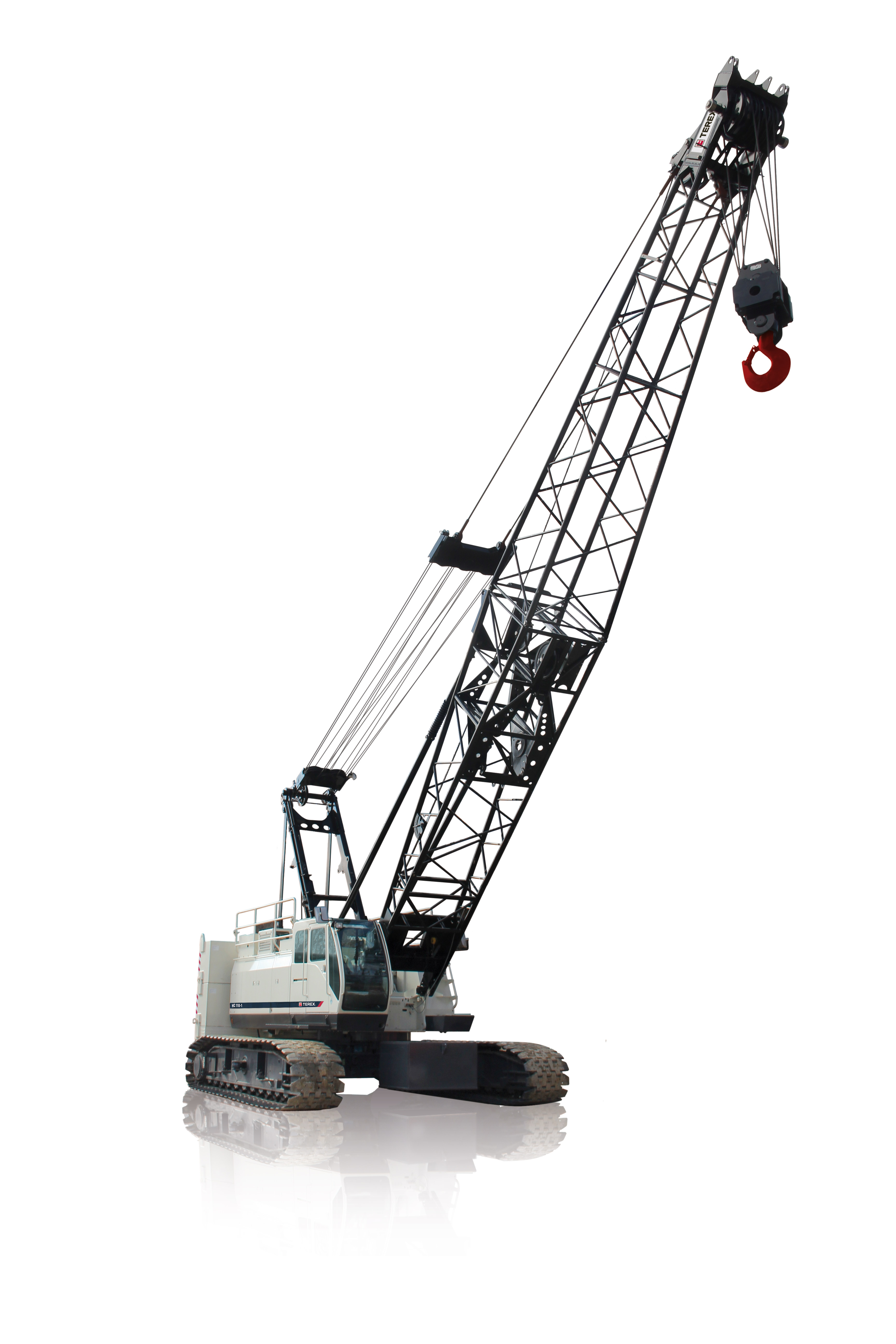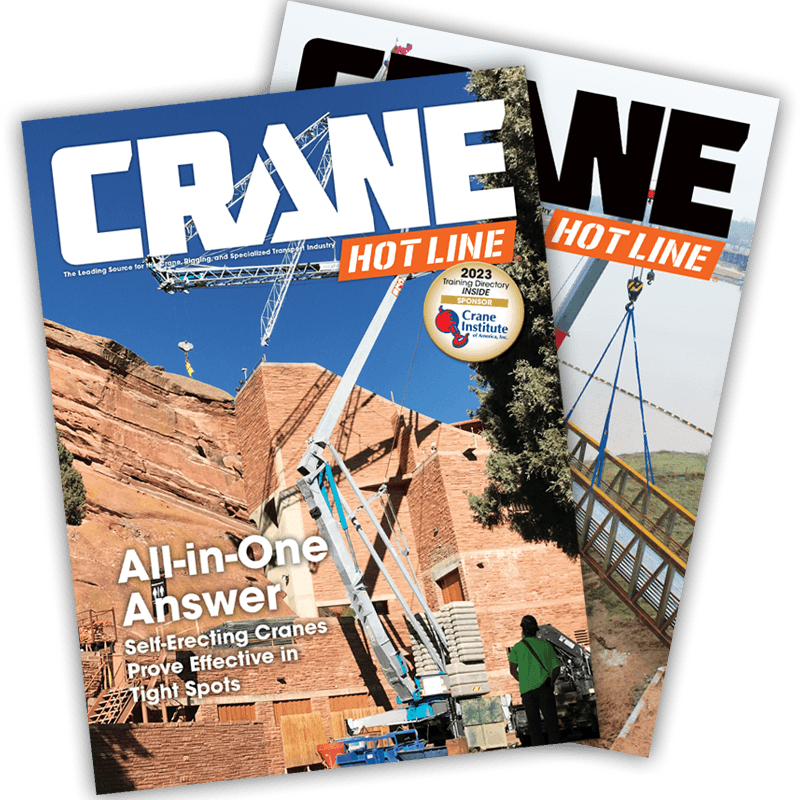Terex Updates Transportation, Operation Features on HC 110 Crawler Crane
 |
| Enlarge Image Terex HC 110-1 Crawer Crane |
November 30, 2016 - The HC 110 crawler has been a mainstay in the Terex Cranes’ product line for more than 15 years. Terex reports it is one of the most popular HC Series because of its versatility and proven boom design. In 2016, Terex updated the 110-ton unit with features that make it easier to setup, less expensive to maintain, and more cost effective to transport.
One key improvement of the HC 110-1 is transportability. The main load of the older design weighed 105,000 lbs. for transport. The new unit’s main load weighs less than 100,000 lbs., including the tracks and inner boom. During transport, it measures 12 ft. wide and 10'9" tall.
Carrying over the proven boom design from the previous model, the updated HC 110-1 has a maximum boom length of 230 ft. and a maximum tip height of 284 ft. The crane now has main and auxiliary drums that are the same size and equipped with freefall. Both drums have a maximum line speed of 566 fpm and maximum single line-pull of 42,108 lbs. Each drum, including the optional third drum, has power up/down. Terex also switched from imperial to metric wire rope.
For smoother operation, the control system gradually slows down operating speed as the load-hoist drums or boom hoist approach the limits of their range of movement.
The crane’s two-speed travel lets operators select the best combination of speed and power to meet any jobsite condition.
The HC 110-1 gets its power from a 250-hp Cummins Tier 4 Final diesel engine. “All of the HC Series use Cummins engines, and we’ve been pleased with the performance of Cummins in these machines,” says Wendy Knowles, senior sales operations analyst.
Terex also has simplified the hydraulic counterweight removal system on the HC 110-1 and has eliminated bolts and all hydraulic components from the counterweights. Knowles says that previously the hydraulics for raising and lowering the counterweight were in the base. Now they are stacked, and the hydraulic mechanism that raises and lowers the counterweights is fully integrated into the machine upper. Also, the lower counterweights were previously located on the side frames, and they now mount to the carbody, which gives a more efficient footprint.
On the older design, the axle extensions had to be removed from the machine. “That’s extra labor, and there’s always the chance that the extension will be dropped or left on the jobsite,” Knowles says. The updated crane’s axle extensions stay attached to the machine and swing into stowed position when not in use.
The operator’s cab is now wider, and the control levers are shorter and repositioned on the right side of the seat for improved field of view. The LMI also has been updated.
Safety improvements include an updated rail system on the upper portion of the machine to provide fall protection for operators and technicians and covers for all hot surfaces.


